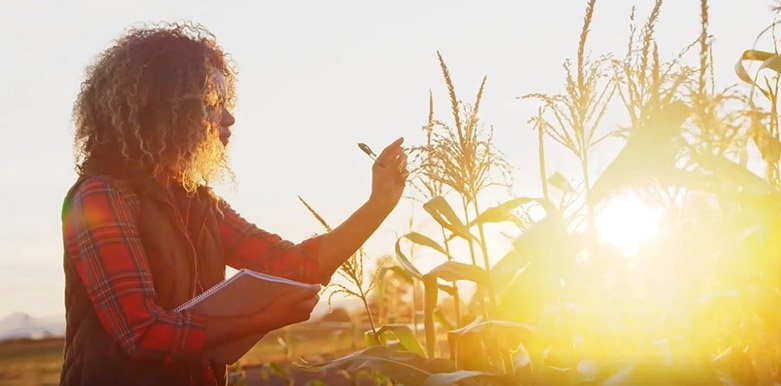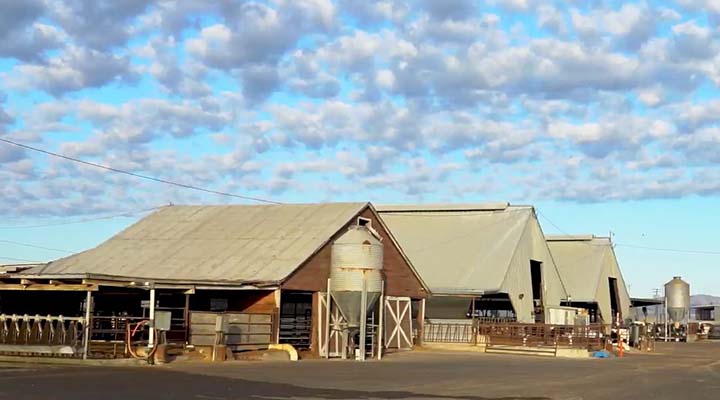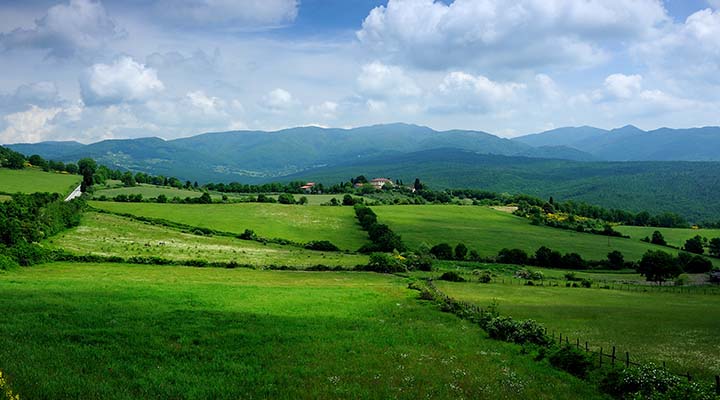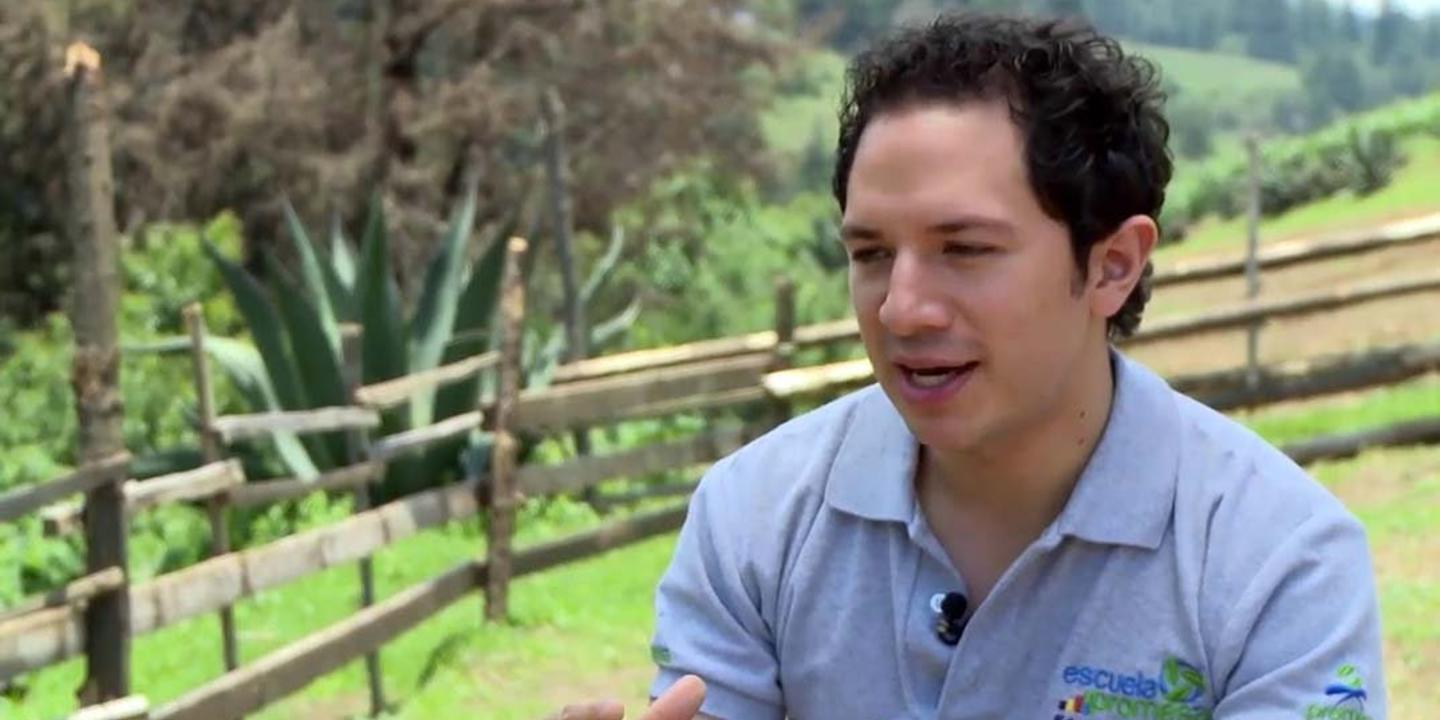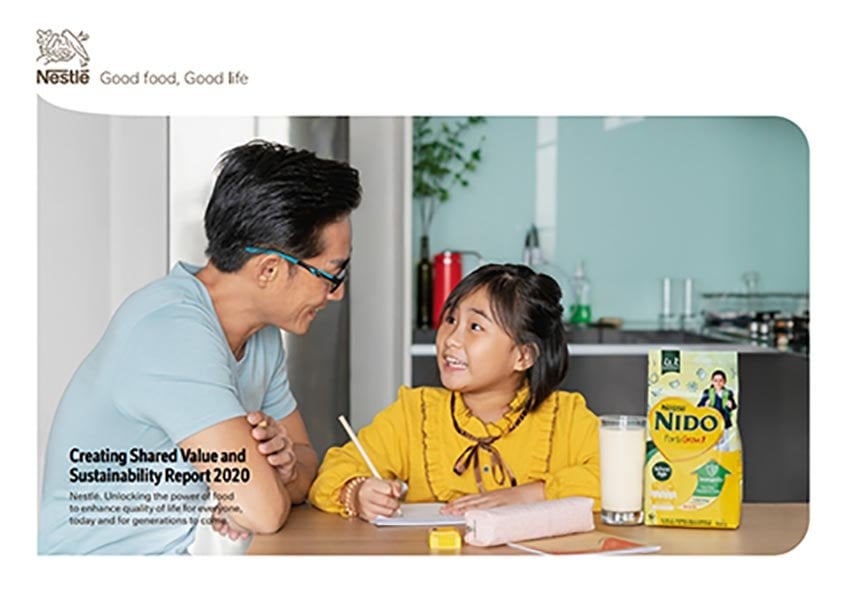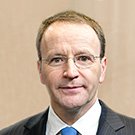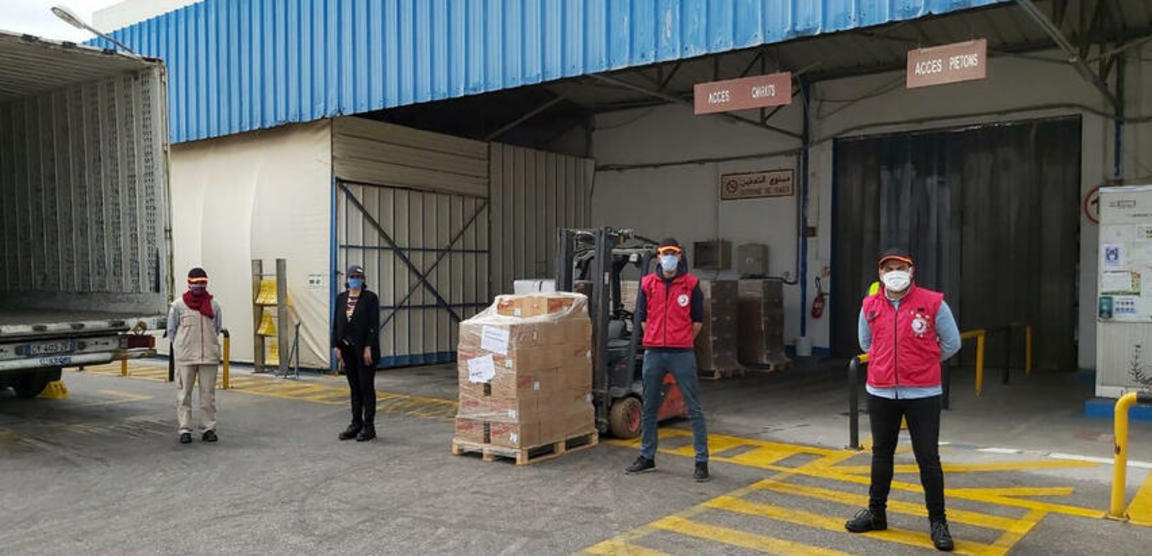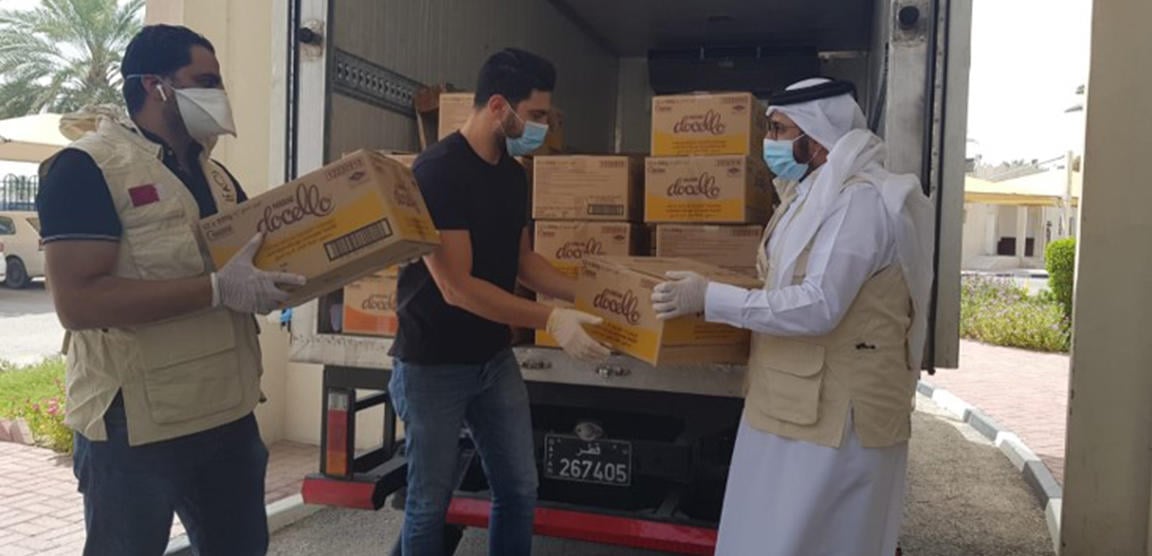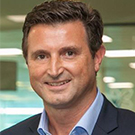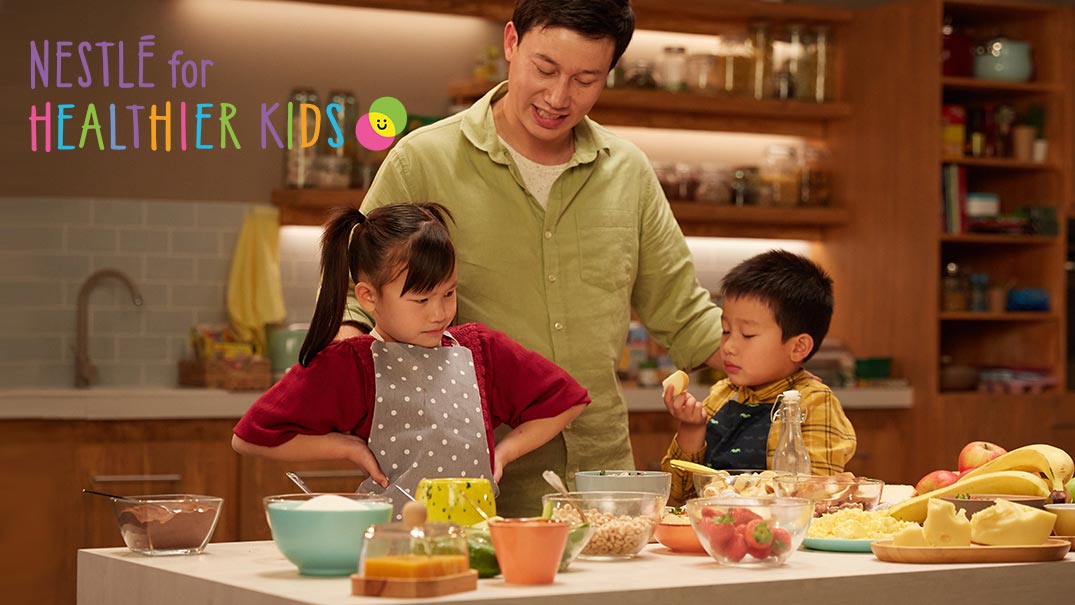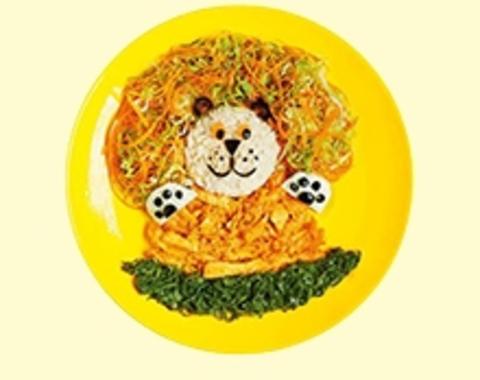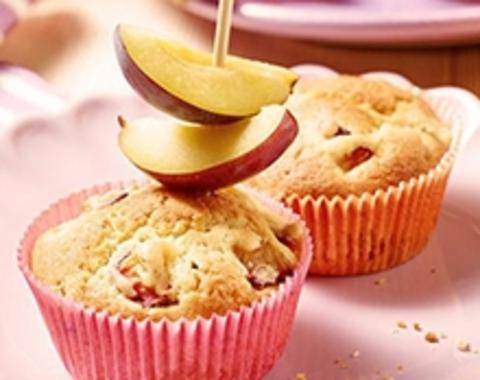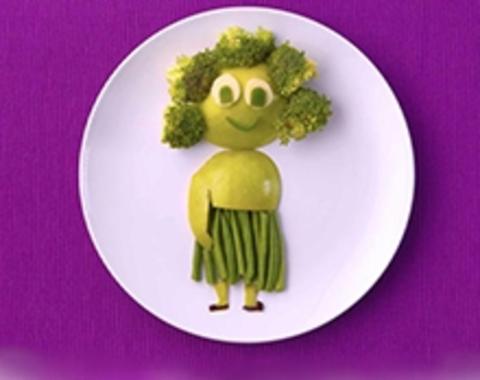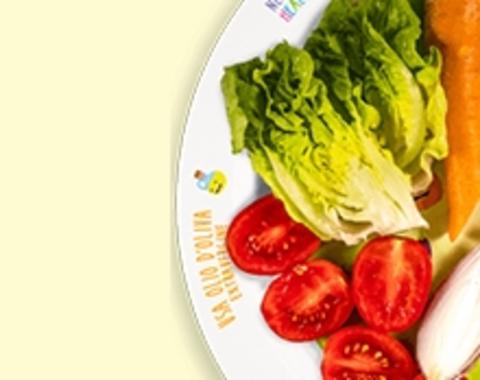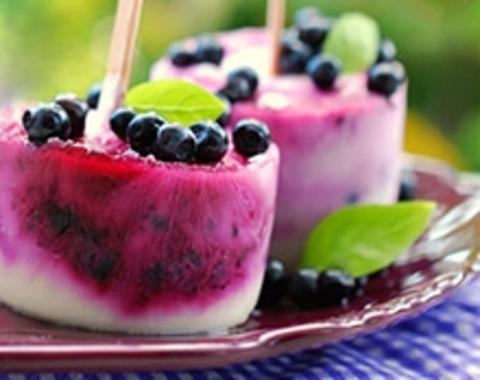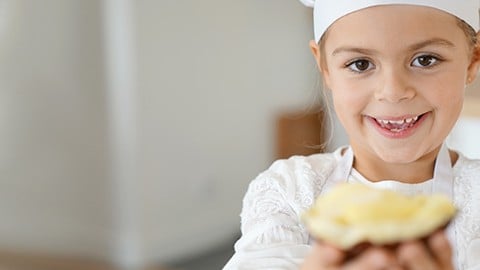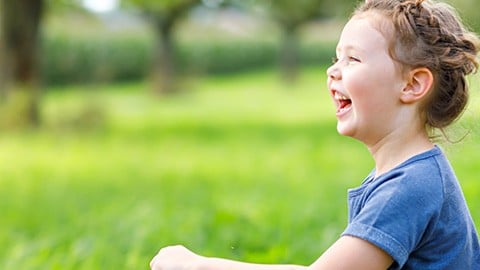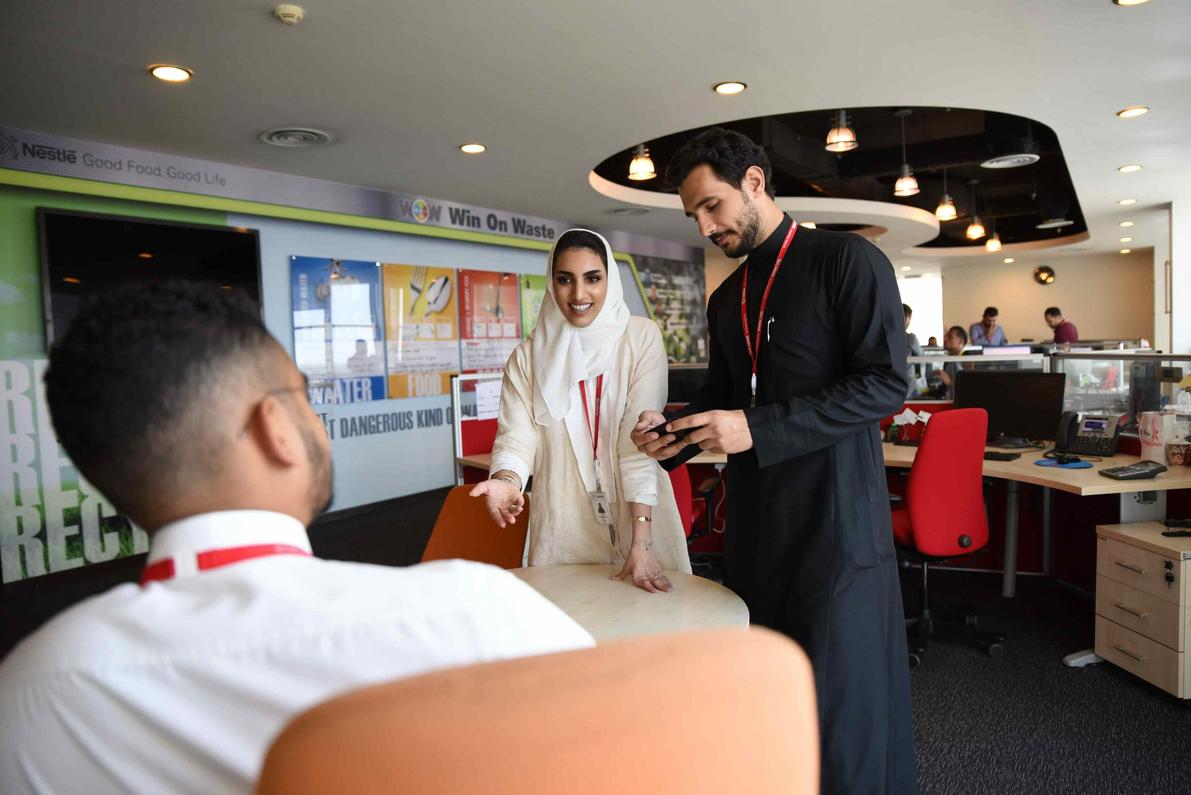
Our target is to source 20% of our key ingredients through regenerative agriculture by 2025, and 50% by 2030. That's more than 14 million tonnes of ingredients that support regenerative practices.
Nearly two-thirds of Nestlé's total greenhouse gas emissions come from outside our direct operations, particularly from land use change and agriculture. That's why regenerative agriculture is a focal point of our path to reach net-zero emissions.
Advancing regenerative farming practices
Regenerative agriculture is a farming system that aims to conserve and restore farmland and its ecosystem. It aims to maintain, sustain, improve and restore what has been degraded over the past. The outcomes of regenerative agriculture form the foundation of sustainable food production.
We will work with our food system partners, including our network of more than 500,000 farmers and 150,000 suppliers, to advance regenerative farming practices.
We will help farmers adopt such practices by:
- applying the latest science and technology, and providing technical assistance
- offering investment support
- paying premiums for regenerative agriculture goods

Just Transition
The transition to farming practices that prioritize ecosystems and regenerate our land depends upon farmers. A just transition in this field means that farmers do not bear the weight and cost of this transition alone. As part of this journey, we will initiate new programs to help address the social and economic challenges of the transition.
We will implement new living income programs for farmers in our value chain. Later this year, we will unveil plans for our coffee and cocoa supply chains.
Find out more about the most important regenerative farming practices that we want to promote. They include, among others, enhancement of biodiversity, soil conservation, regeneration of water cycles and integration of livestock.
With our long-standing partnerships with farming communities globally, we want to increase our support for farming practices that are good for the environment and good for people.
Generation Regeneration
We're striving to co-create a resilient future for our planet and its people. That's why we are making a promise to advance regenerative food systems at scale.
Climate change and environmental threats such as the degradation of forests, land, soil and waterways are impacting farmers and communities. These threats put farmers' livelihoods at risk and jeopardize the accessibility and availability of quality food.
We must help protect and restore our planet's resources. This requires a transformative change.
That is why Nestlé is embarking on a journey toward regeneration; to help protect, renew and restore the environment, improve the livelihoods of farmers and enhance the resilience and well-being of communities and our consumers.
We believe each and every one of us has a role to play in helping protect our future. Whatever your age, gender, nationality or background – together, we can all make a difference. Both today and for generations to come.
Regenerative agriculture is our first step, but we're not stopping there.
Our promise in action
Environment
How we help to protect, renew and restore our environment through regenerative practices.Communities
How we help to improve the livelihoods, resilience and well-being of communities all over the world.Nutrition
How we provide more access to nutritious food to improve the well-being of the billions of people we serve every day.You may also be interested in
The Nestlé CSV Prize
Inspiring solutions for over ten years
The competition
The Nestlé CSV Prize 2020-2021, in partnership with Ashoka, was entitled 'How do we create a waste-free future?'. We are identifying innovative solutions that contribute to our vision that none of our packaging, including plastics, ends up in landfill or as litter.
From reuse and refill systems, through recycling innovations, to behavior change initiatives, we welcomed entries from around the globe that aligned with our actions to tackle plastic waste.
The selection process and finalists
We launched the Nestlé CSV Prize 2020-2021 in September 2020, receiving entries from 173 applicants. Over the next 10 months, each application was reviewed by Nestlé packaging experts.
Ten finalists have been selected based on their potential for positive impact for a waste-free future and for collaboration with Nestlé. From these, the winner(s) will be chosen by the Nestlé CSV Council and announced on July 5.
All finalists benefit from Ashoka's online resources and workshops, as well as a mentoring program, to explore the potential for collaboration with Nestlé.. Additionally, the winner(s) receive(s) a cash prize up to CHF 250 000. Through this financial investment and technical resources, innovators can amplify their impact, scaling up solutions to achieve potentially global change.
The finalists
Latin America
Guatemala: Uplifting people with disabilities through recycling with Circulo
The problem: In Guatemala, people face two key problems – low quality of life for people with disabilities and a rising burden of single-use plastic pollution.
The solution: Circulo collects and processes waste materials, upcycling them into new products. These products are then sold, with profits funding health treatments and employment opportunities created for people with disabilities.

Mexico: Establishing community recycling with Promesa
The problem: While over 53 million tons of waste is produced in Mexico annually, the country is ill-equipped for recycling. This is compounded by a lack of environmental education.
The solution: Through a comprehensive education program, Promesa is enabling companies, schools and households to develop self-sustaining community recycling schemes.
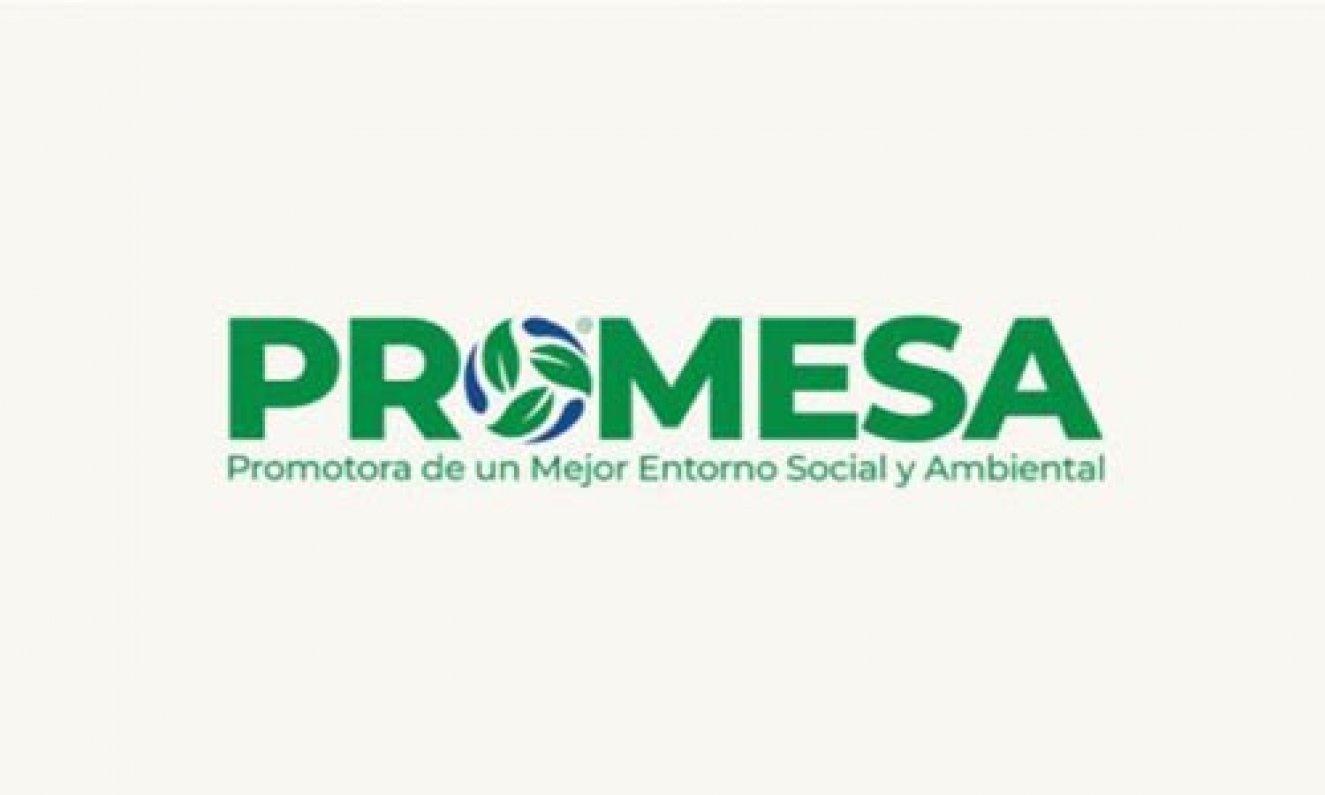

North America
USA: Enabling transitions to reusable packaging with Vessel
The problem: Single-use disposable packaging is a significant contributor to the global waste crisis. However, while better for the planet, reusables still pose challenges in the form of more complex asset tracking, re-collection and washing.
The solution: Vessel harnesses Internet of Things (IOT) technology and expert reverse logistics knowledge to support companies in transitioning to reusable foodware and packaging.


Canada: Engaging the public in circularity with Planet Protectors
The problem: People know change is required to protect the planet. However, existing programs, which rely solely on sharing information rather than appealing to our emotions, are ineffective.
The solution: Planet Protectors is developing a mobile game to encourage children to adopt a circularity mindset and make reducing waste a fun and collaborative activity.


Europe and the Middle East
France: Enabling a transition to renewables with Pandobac
The problem: In France, single-use disposable packaging for food transportation and distribution ends up mostly incinerated, as landfill waste or pollution.
The solution: Pandobac provides solutions for implementing reusable packaging systems. Consultancy services help companies explore packaging issues, calculate financial implications and identify the best reusable options. Pandobac also rents reusable crates, which are tracked and washed to ensure reuse.
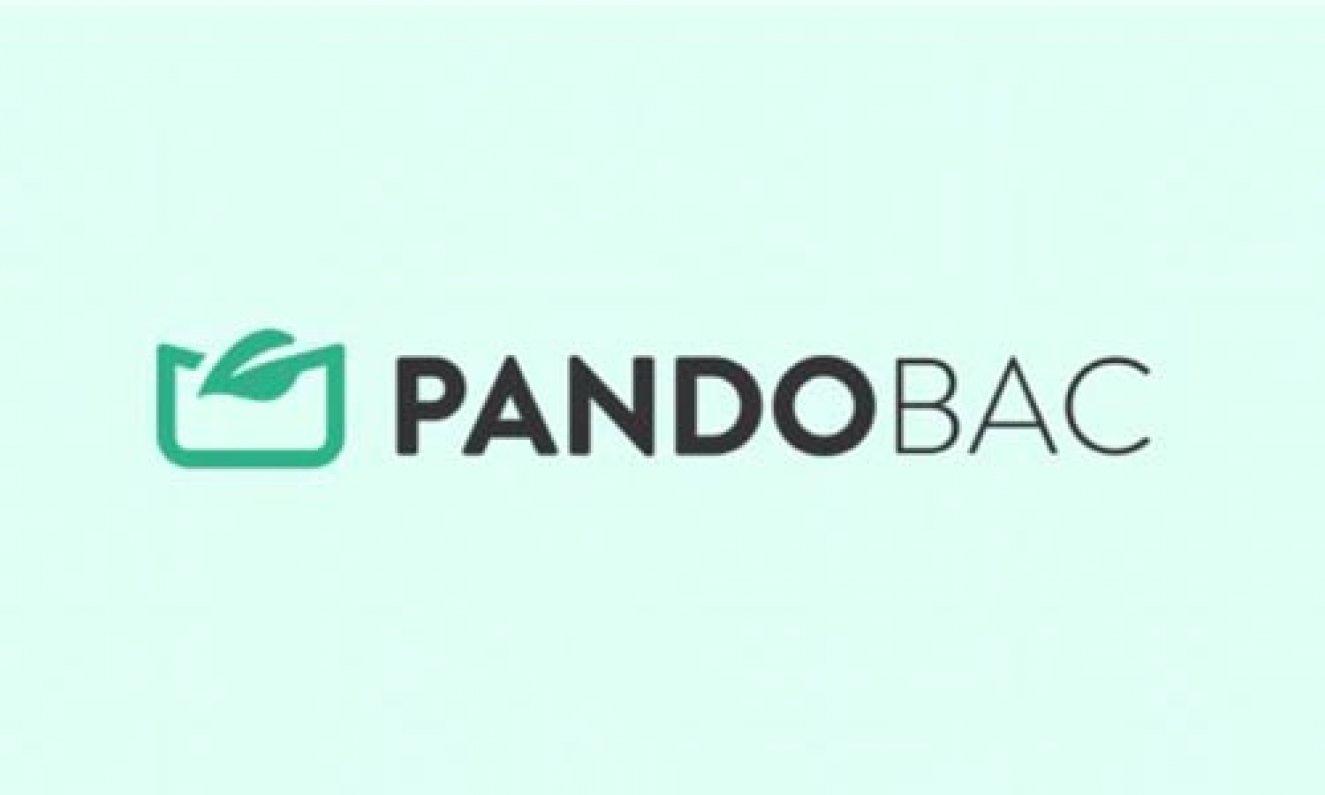
Lebanon: Removing barriers to recycling with Live Love Recycle
The problem: For years, Lebanon has lacked efficient waste management, with no government strategy to reduce production and no incentive for consumers to recycle. The result is that many natural spaces are now saturated with waste.
The solution: Live Love Recycle has created an app that offers on-demand recycling collection services, removing a barrier to sustainable waste management.


Africa
Tanzania: Upcycling to support people and the planet with EcoAct
The problem: EcoAct is addressing plastic waste, deforestation and climate change, as well as social problems including slum proliferation and barriers to health facilities for lower income families.
The solution: EcoAct transforms plastic waste into durable timbers for construction. This affordable alternative to wood reduces deforestation and climate change impacts. Through the Garbage Medical Insurance project, families living in slums can exchange plastic waste for medical health insurance coverage.


South Africa: Digitizing the recycling supply chain with Kudoti
The problem: USD 120 billion worth of waste plastic material is lost every year due to supply chain inefficiencies, preventing it from being recovered and reused.
The solution: The Kudoti platform is a digital network of recycling stakeholders, empowering a range of organizations - from recyclers and brands to local-level aggregators and collectors - to buy and sell recovered waste resources in a profitable, traceable manner.

Asia
Singapore: Closing the loop on waste with RecyGlo
The problem: Less than 20% of waste produced in Southeast Asia is extracted for recycling, reuse or composting. Half of it leaks into waterways while the rest is sent to landfill.
The solution: RecyGlo has developed a B2B closed-loop platform through which it facilitates refill stations for everyday products, door-to-door delivery for business and households, and collection services for plastic waste.

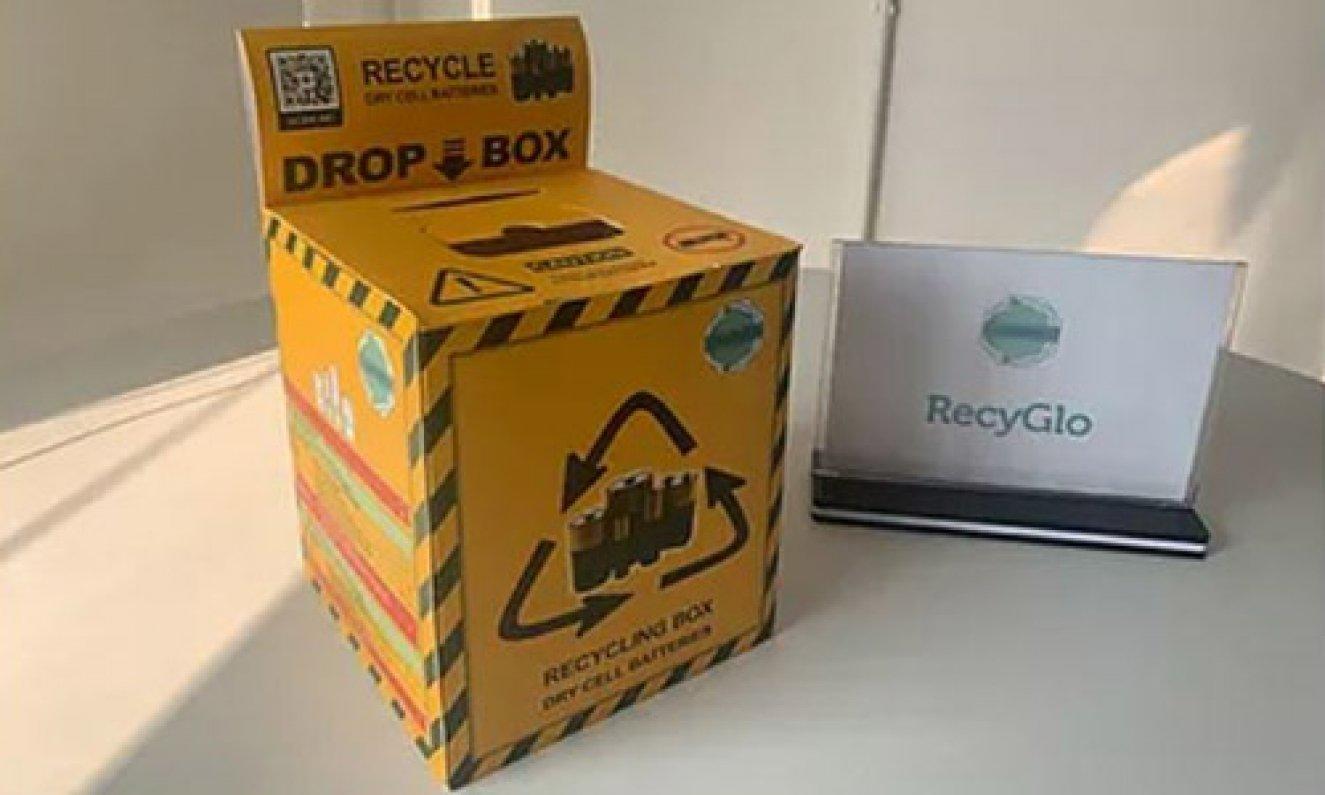
India: Giving plastics a second life with Ricron Panels
The problem: Mixed plastic waste and multi-layer plastics are not easily recycled and are instead sent to landfill or incinerated for energy recovery. The majority, however, remains uncollected, leaking into oceans, rivers and natural spaces.
The solution: Ricron Panels converts hard-to-recycle plastic waste into sustainable building materials. Ricron is a direct substitute for traditional building materials, such as plywood, metal and cement and can be used in applications from housing and sheds to furniture.

Our response to COVID-19
During this unprecedented time, our purpose of enhancing quality of life is now more important than ever. From our supply chain, to our factories, and right through to your homes, we continue to work around the clock to ensure that we continue to meet the nutritional needs of your families and pets.
Our priorities remain:
1. safeguarding the safety and wellbeing of our employees, our collaborators, business partners and the communities we are a part of;
2. ensuring continued production and delivery of much-needed food and beverage products to help meet the nutritional needs of individuals and families;
3. stepping up relief efforts to local communities and healthcare professionals.
On the ground we are mobilizing Relief efforts in several ways around the Middle East and North Africa, including donations of food, beverages and bottled waters, as well as support for medical institutions, food banks and food-delivery organizations.
People are at the heart of our business. Therefore, the health and safety of our 15,000 employees in our region, business partners and the communities where we operate are extremely important to us. We are working very hard to keep them healthy, safe and supported.
Together with our supply chain, distribution and retail partners, we are working to ensure that food, beverages, pet food and bottled water are available around MENA. Our people are fully committed and are working tirelessly to ensure that supply is maintained.
For the last 154 years, our consumers, employees, business partners and communities have relied on us during the most challenging times. And today, we're right there with you in fighting this significant global challenge with flexibility, resilience, courage, and a caring heart.
The COVID-19 pandemic is a global problem and consequently we are offering help on the ground everywhere, drawing on our extensive presence and experience in 187 countries.
Our actions include:
Keeping our employees healthy, safe and supported
- In addition to our regular strict hygiene standards, putting in place additional safety measures in our factories, offices and distribution centers.
- Offering office-based employees the flexibility and needed setup to work from home whenever possible.
- Asking our employees worldwide not to travel internationally for business purposes.
- Advising and providing continuous awareness to employees on minimizing the risk of infection both at work and at home.
- Requesting that any employees who may be experiencing symptoms inform their line manager and self-quarantine for 14-days.
- Supporting our employees through this challenging period, by providing sick leave with full pay for those who contract the virus, for as long as they medically require.
- Working with our supply chain, distribution and retail partners to implement appropriate infection control measures and ensure continued production and delivery of products.

Joining forces with the International Federation of the Red Cross and Red Crescent Societies (IFRC)
- Donating food, medical nutrition products and bottled water, and supporting logistics to bring relief to those most affected by the pandemic.
- Globally donating CHF 10 million for immediate deployment in countries where it is most needed.
- Globally matching 1:1 any donations to the Red Cross and Red Crescent National Societies or Federation made by our employees.
- In the MENA region, providing food and medical support to the Iraqi Red Crescent Society, the Syrian Arab Red Crescent Society, the Tunisia Red Crescent, and the Emirates Red Crescent.

Helping with local relief efforts
- Providing support and donating food to authorities, medical institutions, food banks, NGOs and relief organizations in the frontline of the fight against this pandemic.
- Supporting physicians through sharing knowledge on new tailored COVID-19 medical nutrition treatment protocol.
- Providing prompt and pragmatic support to our business partners.
- Across MENA, we have supported 100,000 families and 50,000 healthcare professionals, and donated 10 Million Food and Beverage servings, 620,000 liters of water and 100,000 face masks. The initiatives are implemented in collaboration with more than 30 local entities in 17 countries.

Some of our ongoing efforts across MENA include:
We care deeply for people and for the communities in which we operate, and always strive to remain true to our purpose of Enhancing Quality of Life and Contributing to a Healthier Future. Food and beverages help keep people healthy and enhance their quality of life, and we want to meet our responsibility to provide good nutrition, especially for the most vulnerable in society.
Base page

We are truly grateful to have been a part of this remarkable region for over a century. From Egypt to Morocco, and from Saudi Arabia and the UAE to Lebanon and Syria, with a presence in Iraq, Palestine, and Yemen, our journey has been marked by significant investments in our people and business operations. We have consistently driven impactful innovation and wholeheartedly embraced digital transformation across these countries. At the same time, we actively contribute to the community and step-up relief efforts where needed.
Our team of brilliant, talented, and dedicated professionals embody our purpose and values. Their hard work and commitment have been crucial in establishing Nestlé's leading industry position and fuelling our optimism for what lies ahead.
In the Nestlé Middle East and North Africa, we employ over 14,000 people and provide indirect employment opportunities to several thousand more in the 19 countries in our region. Our operations encompass 24 factories and a diverse portfolio of 60 beloved brands, in categories including bottled water, cereals, coffee, food, confectionery, dairy, infant nutrition, and more. We believe in the potential of business to be a catalyst for positive change. Despite facing decades of challenges, our region has shown steadfast resilience and determination, and to us, it means opportunities for growth, talent development, innovation, and a promising future. With our capabilities, our expertise and unwavering determination, we are poised to contribute to our communities in the Middle East and North Africa as well as the broader societal needs by integrating the right actions into our work.
At Nestlé, Creating Shared Value is at the heart of our purpose: to unlock the power of food to enhance quality of life for everyone, today and for generations to come. We are continually striving to build a business that benefits not only our company, but also the communities, individuals, families, and the planet. Recognizing that this is intrinsically tied to the long-term success of our business.
Our role in the community is to provide quality products and services and meet the diverse needs of our consumers while providing tasty and balanced diets that are accessible to everyone. Our goal is to lead in regional sustainability, accelerating decarbonization to act on climate change, tackle packaging waste, promote a circular economy to close the loop, and care for water. We believe in the power of Youth in the Middle East and North Africa region, and we are determined to empower the next generation of leaders to forge successful careers.
Over the years, we have built trust and credibility with our suppliers, business partners, local institutions, and authorities. We continuously advocate for collective efforts and partnerships and are committed to playing a positive role in our region, driving sustainable change, and value in our communities.
Yasser Abdul Malak
Chairman & CEO,
Nestlé Middle East and North Africa
sample page
Helping 50 million children lead healthier lives by 2030
Nutrition is key to ensure a child’s healthy development. But as always, theory is one thing, practice is another. Encouraging kids to eat more veggies and fruits, ensuring their meals are as nutritious as possible and incorporating diversified protein sources – including plant-based options – can sometimes prove challenging for parents and caregivers.
Nestlé for Healthier Kids brings together all our efforts to support parents and caregivers on their journey to raise healthier kids. We are launching more nutritious foods and beverages worldwide to answer children’s nutritional needs, while providing nutrition education through school programs, as well as everyday tips and healthy recipes for parents. Our ambition is to help 50 million children lead healthier lives by 2030.
Getting children involved in the preparation of meals leads them to adopt healthier eating habits – in short, their diet quality is higher, with children more inclined to eat fruits and vegetables. That’s why we encourage and advocate ‘togetherness’ — when parents and kids come together in the kitchen.
Why are the best meals the ones that we prepare together?
[1,2,3*]
[4,5,6*]
[7,8,9*]
1. Overall diet quality was higher among Canadian fifth graders who helped prepare home meals at least once a week compared with those who never helped with meal preparation (Chu YL et al. J Nutr Educ Behav. 2014;46:304-8)
2. A cross-sectional study in Australia showed that boy (not girls) with the “healthful” dietary pattern were more involved in helping make meals than boys with an “energy-dense” eating pattern (Leech RM et al. Appetite. 2014;75:64-70)
3. Helping with cooking was positively associated with adhering to a healthy Mediterranean diet in 7th-9th graders in Portugal (Leal FM et al. Persp in Pub Health. 2011;131:283-7)
4. Canadian fifth graders who regularly helped prepare home meals ate 1.4 more servings of fruits and vegetables per day (combined) than children who never prepared meals (Chu YL et al. J Nutr Educ Behav. 2014;46:304-8)
5. Japanese children (10-11 years old) who helped with meal preparation were more likely to eat vegetables and fruits every day compared to those who did not participate in meal preparation (Nozue M et al. Nutr Res Pract. 2016; 10:359-63)
6. Involving young children (2-5y) in food preparation increased frequency of fruit and vegetable intakes (Shim JE et al. J Nutr Educ Behav. 2016;48:311-7)
7. Helping to cook meals regularly was associated with a 10% increase in preference for vegetables in 5th graders in Canada (Chu YL et al. Pub Health Nutr. 2013;16:108-12)
8. Increased involvement or extent of parental encouragement for children to help with food preparation was positively associated with preferences for vegetables in 3-7 year old children (Vollmer RL and Baietto J. Appetite. 2017;113:134-40)
9. Preschoolers were more willing to eat vegetables when the child helped prepare recipes with vegetables (Ugalde M et al. JMIR Serius Games. 2017;5:e20)
The two focus areas of the program:
1. Accelerating the transformation of our product portfolio
To ensure our brands support healthier lifestyles and meet today’s nutritional needs, we have already:
- Removed over 40,000 tonnes of sugar and 6,200 tonnes of saturated fat since 2014;
- Removed over 15,000 tonnes of salt since 2012;
- Increased the number of micro-nutrient fortified food to 174 billion in 2017;
- Ensured that 99.8% of our portfolio is free of trans-fatty acids (TFA).
We have also made forward-looking commitments by 2020:
- Add 750 million portions (80g) of vegetables;
- Add at least 300 million portions (16g) of fiber-rich grains, pulses, nuts & seeds to products;
- Further reduce sugars by 5%;
- Further reduce salt by 10%;
- Complete our commitment made in 2014, to reduce saturated fats by 10% in all relevant products that do not meet WHO recommendations.

Recent product launches including Gerber, NaturNes, Ninho...
In 2018, we launched over 1,300 nutritious food and drink products, adding to the 1,000 products that we had launched in 2017. In the same year, we provided over 184.7 billion servings of fortified foods and beverages in countries where people lack vital micronutrients such as iodine or iron.
Here are some examples:
Veggie food with Winiary
In Poland, Winiary launched a delicious and nutritious new product: a soup with wholegrains. This soup comes in three different flavors - mushroom soup with barley, pea soup with barley and “krupnik” with millet - these soups contain dried vegetables seasoned with an aromatic mix of herbs and spices, and are packed full of nutritious barley or millet.
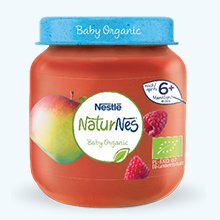
Organic baby food with Gerber & NaturNes
Gerber and NaturNes provide a wide range of organic babyfood from vegetable and fruit purees, to cereals-based snacks and nutritious meals.
Going beyond organic standards, these products, available to European and North American consumers, aim to bring the best of nature to babies and toddlers.

Organic cereals for babies with Cerelac
Cerelac Organic Selection is a baby cereal made with 100% locally sourced organic wheat and milk. Launched in India in 2019, Cerelac will soon be offered across Asia and Africa.
Related commitments
Thank you
In the meantime, we hope you enjoy visiting this website.
Nationalization
Nationalization at Nestlé
Our Commitment to Local Talent
Nestlé is a global organization, reliant on talent locally to help sustain our position as the world's largest food and drink company. We are always seeking ways to further enrich our talent pipeline by encouraging local talent to apply for roles here in the Middle East. We believe people with knowledge and lived experience of a country help to give us a competitive advantage, and help us serve the markets in which we operate.
In certain markets, we run "Centres of Excellence", which help to identify and nurture young talent through development programmes, and we're often on the lookout for more experienced local talent to join us in a variety of roles too.
Fundamentally, we are committed to all talent and foster diversity and inclusion in everything we do.
People first
We are currently actively looking for local talent in Saudi Arabia, Bahrain and Oman.
For the Nationalization opportunities, we follow government regulations in that country; this varies country to country.
Nationalization
Nestlé is a global organization, reliant on talent locally to help sustain our position as the world's largest food and drink company. We are always seeking ways to further enrich our talent pipeline by encouraging local talent to apply for roles here in the Middle East. We believe people with a knowledge and lived experience of a country help to give us competitive advantage, and help us serve the markets in which we operate.
In certain markets we run "Centre's of Excellence", which help to identify and nurture young talent through development programmes, and we're often on the lookout for more experienced local talent to join us in a variety of roles too.
Fundamentally, we are committed to all talent, and foster diversity and inclusion in everything we do.
People First
We are currently actively looking for local talent in Saudi Arabia, Bahrain and Oman.
For the Nationalization opportunities, we follow government regulations in that country; this varies country to country.
Travel through our history timeline
Time travel through the Nestlé story
Come on a journey through Nestlé's company history. We'll begin in 1866 and finish in the present day.
Along the way, we'll see why Henri Nestlé created infant cereal, how the company weathered downturns and two world wars. We'll follow the acquisitions and the move into chocolate, pharmaceuticals and petcare. Before arriving here today, at the world's largest food and beverage company. Ready?
Explore our story below. Alternatively, you can download Nestlé company history timeline (pdf, 2Mb)
Period highlights
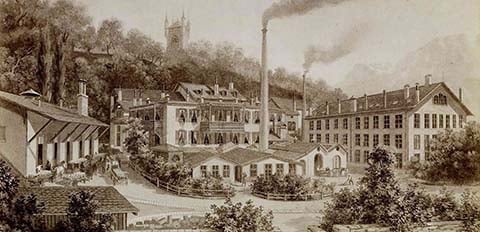
1866

US brothers Charles and George Page establish the Anglo-Swiss Condensed Milk Company. Using the abundant supplies of fresh milk in Switzerland, they start Europe's first production facility for condensed milk. They sell the milk under the Milkmaid brand. It's marketed as a safe, long-life alternative to fresh milk.
1867

Nestlé's founder, German-born pharmacist Henri Nestlé, launches his 'farine lactée' ('flour with milk') in Vevey, Switzerland. Combining cow's milk, wheat flour and sugar, the product is designed for infants who can't be breastfed, to tackle high mortality rates. Around this time he starts using the iconic 'nest' logo.
1875

Henri Nestlé, now in his 60s, sells his company and factory in Vevey to three local businessmen. They employ chemists and skilled workers to help expand production and sales.
1878

Fierce competition develops between Nestlé and Anglo-Swiss. They are now selling rival versions of the other's original products: condensed milk and infant cereal. Both firms expand sales and production abroad.
1882-1902

In 1882 Anglo-Swiss moves into the US, but the death of founder George Page slows down plans. In 1902 Anglo-Swiss sells its US-based operations, paving the way for an eventual merger with Nestlé.
1904

Nestlé starts selling chocolate for the first time after taking over export sales for Peter & Kohler. In 1875, the Nestlé company also plays a role in developing milk chocolate by supplying Vevey neighbor, Daniel Peter, with condensed milk. Peter uses this in his trials to create the first milk chocolate to eat.
Period highlights
1905

Anglo-Swiss and Nestlé merge to form the Nestlé & Anglo-Swiss Milk Company. The company has two head offices in Vevey and Cham (Switzerland) and opens a third office in London to help drive export sales. Over several years the company expands its range to include unsweetened condensed milk and sterilized milk.
Period highlights
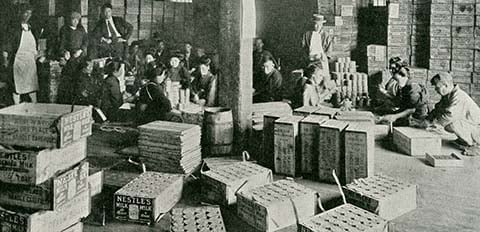
1914

War breaks out across Europe and disrupts production for the company. The hostilities also drive demand for Nestlé dairy products, in the form of large government contracts.
1915

Condensed milk is long-lasting and easy to transport, which makes it popular with armed forces. In 1915 the British Army starts giving Nestlé canned milk to soldiers in their emergency rations. Strong demand for this product means that the company's milk refineries are working flat out.
1916

Nestlé & Anglo-Swiss acquires Norwegian dairy company Egron. The business has patented a spray-drying process for producing milk powder, which Nestlé & Anglo-Swiss starts selling.
1917-1918

Milk shortages in Switzerland mean that Nestlé & Anglo-Swiss has to give its fresh milk supplies to help people in towns and cities. To meet the demand for condensed milk from the warring nations, the company buys US refineries and signs supply agreements with Australian companies, which it later acquires.
Period highlights
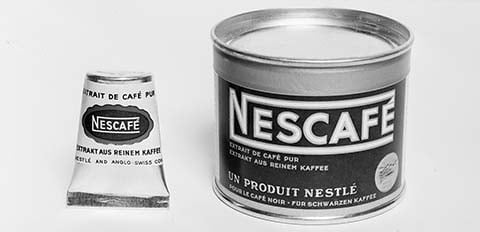
1921-1922

In 1921, falling prices and high stock levels lead to the first, and only, financial loss for Nestlé & Anglo-Swiss. Banker Louis Dapples joins as crisis manager and encourages the company to appoint professional managers for the first time. Administration is centralized and all research is brought together at a laboratory in Vevey, Switzerland.
1929

The company buys Switzerland's largest chocolate company Peter-Cailler-Kohler, the origins of which date back to 1819 when François Louis Cailler created one of the country's first chocolate brands, Cailler. Chocolate now becomes a large part of the Nestlé & Anglo-Swiss business.
1934

Malted chocolate drink Milo launches in Australia, and is later exported to other markets. The company continues to develop baby and infant foods and introduces Pelargon in 1934. This is a full-milk powder for babies, enriched with lactic acid bacteria to improve digestibility.
1936

1936 sees Nestlé & Anglo-Swiss transformed into a holding company with a dual geographical structure (Nesthold in Vevey and Unilac in Panama). Nestlé launches the vitamin supplement Nestrovit and, the following year, the innovative products Galak white chocolate and Rayon, a chocolate with honey and air bubbles.
1938

Nescafé is launched as a 'powdered extract of pure coffee' that delivers coffee's natural flavor just by adding hot water. It's the brainchild of Max Morgenthaler, who created the product when the Brazilian government asked Nestlé & Anglo-Swiss to find an outlet for its huge coffee surplus.
Period highlights
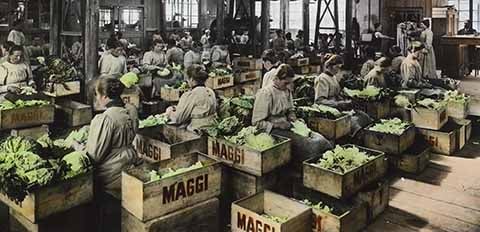
1939

Fearing that the Axis powers could occupy Switzerland, Nestlé & Anglo-Swiss relocates some managers to a new office in the US. This becomes the company's second headquarters during the war. The fighting makes it impossible for Nestlé to export milk from Europe, so the company supplies Africa and Asia from the US and Australia. It also expands into Latin America.
1942-1945
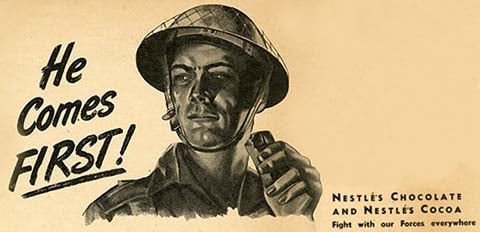
WWII initially slows sales of Nescafé, but they pick up as hostilities continue. When the US enters the war, Nestlé brands gain popularity among American service personnel. At the end of the war, Nescafé is included in CARE aid supplies in Japan and Europe. Following on from the success of instant coffee, Nestea is launched in the late 1940s.
1947

Nestlé & Anglo Swiss merges with Swiss company Alimentana, which produces Maggi soups, bouillons and seasonings. It's renamed Nestlé Alimentana. Alimentana's history dates back to 1884, when Julius Maggi developed a protein-rich dried soup to tackle malnutrition.
Period highlights
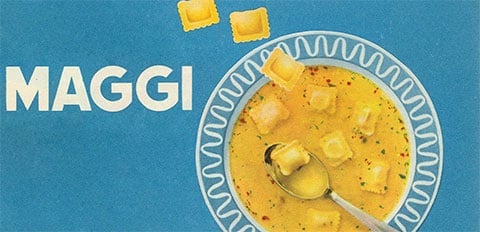
1948
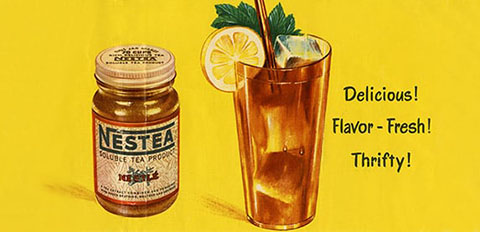
In the US, Nestlé Alimentana launches a soluble tea, Nestea. This is manufactured in the same way as Nescafé and can be served hot or cold. Nesquik, which dissolves easily in cold milk, is also launched in the US and becomes a top seller.
1954

Nestlé infant cereal has been around since 1948 as a powdered product, but it's now rebranded as Cerelac. In addition, Maggi's seasoning brand, Fondor, launches a powder alongside its original bouillon cube. Packaged in a convenient shaker, it can be used as a condiment in the dining room, as well as in the kitchen.
1957
Canned ravioli is launched under the Maggi brand. Its huge success prompts Nestlé to launch more canned, prepared foods. This becomes a new growth segment for the business.
Period highlights
1960

With more households buying freezers, demand for ice cream is rising. Nestlé buys German producer Jopa and French manufacturer Heudebert-Gervais to capitalize on this growth. It also adds Swiss brand Frisco to the mix in 1962. Nestlé brand acquisitions continue with the purchase of UK canned foods company Crosse & Blackwell.
1962

Nestlé buys the Findus frozen food brand from Swedish manufacturer Marabou, and takes the brand to international markets. In 1945, Findus becomes one of the first companies to sell frozen foods in Europe.
1968
As chilled dairy products are increasingly popular, Nestlé buys French yogurt producer Chambourcy. In the early 1970s Chambourcy launches the Sveltesse range of yogurts, aimed at health and weight-conscious consumers.
1969
To add to the acquisitions, Nestlé enters mineral waters by buying a stake in French water brand Vittel.
1973

Keen to bolster its canned foods and frozen portfolio in Anglo-Saxon markets, Nestlé takes over the US frozen foods company Stouffer Corporation. Three years later, it buys canned foods producer Libby, McNeill & Libby.
1974
For the first time in its history, Nestlé diversifies beyond food and drink. It becomes a minority shareholder in global cosmetics company L'Oréal.
1977
Renamed Nestlé S.A., the company continues its diversification strategy, buying US pharmaceutical and ophthalmic products manufacturer Alcon Laboratories. Declining breast-feeding rates lead some activists to question the baby food marketing strategies of companies like Nestlé. In 1977 they call on people to boycott Nestlé products.
Period highlights
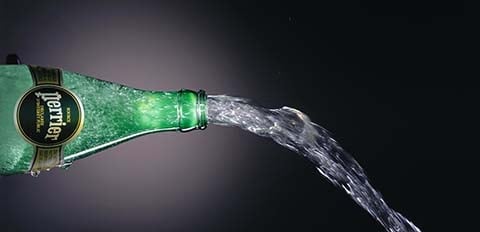
1981
Stouffer's Lean Cuisine frozen meals are launched on a low-fat, low-calorie platform, which creates impressive sales. Nestlé and L'Oreal establish Galderma as a joint venture in dermatology. Plus, the World Health Assembly adopts the WHO code on breast-milk substitutes, which Nestlé applies across the business.
1985

By acquiring US-based Carnation Company for USD 3 billion, Nestlé adds brands such as Carnation and Coffee-Mate to its portfolio. It also enters the pet food business when it buys the Friskies brand.
1986

The Nespresso story begins with a simple idea: enable anyone to create a perfect cup of coffee, just like a skilled barista. People across Japan, Italy and Switzerland are given this opportunity in 1986 when Nespresso officially launches.
Read more: Calling coffee pilgrims everywhere! Nespresso
1988

Nestlé buys UK confectionery company Rowntree Mackintosh, adding brands like KitKat, After Eight and Smarties to its portfolio. It also acquires Italian pasta, sauce and confectionery group Buitoni-Perugina.
1991
Nestlé creates a joint venture with General Mills, Cereal Partners Worldwide, to produce and market breakfast cereals globally. The company also joins forces with The Coca-Cola Company to form Beverage Partners Worldwide. This paves the way for the manufacture and marketing of brands including Nestea.
1992

In 1992, Nestlé develops its position in mineral waters by acquiring France's Perrier Group. It goes on to create Nestlé Sources Internationales in 1993. This business is renamed Nestlé Waters in 2002.
Read more: How a Victorian exercise craze whipped Perrier into shape
1997
As the millennium approaches, Nestlé appoints a new CEO, Peter Brabeck-Letmathe. He sees growth potential in personalized nutrition and starts building Nestlé's position as the leader in 'Nutrition, Health and Wellness'.
1998

Following its acquisition of French water company Perrier, Nestlé now buys the Italian mineral waters business Sanpellegrino Group. It also launches Nestlé Pure Life in developing countries, to guarantee clean and healthy drinking water. Two years later Aquarel is introduced in Europe.
Period highlights
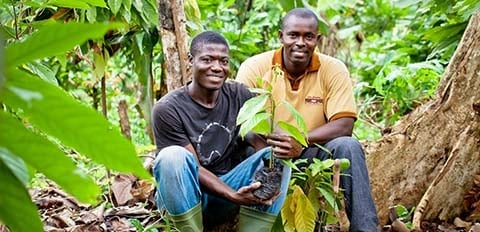
2000

The Sustainable Agricultural Initiative Nestlé (SAIN) promotes collaboration with local farmers. It aims to improve living standards and ensure a more sustainable supply of commodities. In addition, Nestlé moves away from being primarily a processor of agricultural commodities to being a food producer and a key player in the areas of nutrition, health and wellness.
2001

Following the earlier acquisitions of Alpo Petfoods (1994) and Spillers Petfood (1998), Nestlé buys US pet food business Ralston Purina. The business merges this with Nestlé Friskies Petcare to become the new market leader, Nestlé Purina Petcare.
2002

After expanding its ice-cream business in the 1990s, Nestlé acquires the licensing rights to premium ice cream Häagen-Dazs in the US and Canada. The business also buys Mövenpick and Dreyer's Grand Ice Cream in 2003. Aside from the world of ice-cream, Nestlé acquires frozen foods business Chef America for USD 2.6 billion.
2006
Nestlé shares its Creating Shared Value approach to doing business. This states that any action for shareholders must also create value for local communities and wider society. Alongside this, Nestlé acquires weight management business Jenny Craig and Australian breakfast cereals company Uncle Toby's.
2007
A growing focus on medical nutrition leads Nestlé to acquire Novartis Medical Nutrition. It also buys baby food company Gerber, as well as Sources Minérales Henniez, a mineral water business in Switzerland. Nestlé's Board of Directors appoints Paul Bulcke, the current Head of Zone Americas, as CEO of Nestlé and Mr. Peter Brabeck-Letmathe as active, non-executive Chairman of the Board of Directors, effective April 2008.
2009

The first Creating Shared Value Forum in New York brings together experts to discuss global challenges in the areas of nutrition, water and rural development. As well as the role of businesses in helping to solve them. In this year Nestlé also creates its foodservice business division, Nestlé Professional.
2010

Nestlé acquires Kraft Foods' frozen pizza business. In addition, the Nestlé Cocoa Plan and Nescafé Plan are launched to develop the company's sustainable supply chains in cocoa and coffee. The plans aim to improve social conditions in farming communities, while ensuring their profitability.
2011

The business establishes Nestlé Health Science and the Nestlé Institute of Health Sciences. The aim? To research science-based nutritional products aimed at preventing and treating chronic medical conditions. What's more, Nestlé becomes the first food company to work with the Fair Labor Association (FLA), to help tackle child labor in the cocoa supply chain.
2012
In a bid to strengthen its position in infant nutrition, Nestlé acquires Wyeth Nutrition, formerly Pfizer Nutrition, for USD 11.9 billion.
2013
Nestlé Health Science buys US-based medical foods company Pamlab, which specializes in medical nutrition for patients with conditions including mild cognitive impairment and depression. Weight management business, Jenny Craig, is sold in America and Oceania. While Nestlé needs YOUth is launched with the aim of combating widespread youth unemployment.
2014

With the creation of Nestlé Skin Health, Nestlé takes full control of the Galderma dermatology joint venture which it developed with L'Oréal in 1981. The companies also end their joint venture Innéov, a cosmetic nutritional supplements business launched in 2002. Galderma subsequently acquires some of its assets.
2016

Nestlé celebrates its 150th year as a company. It also incorporates a portion of its ice cream, frozen food and chilled dairy business into a joint venture - Froneri - with UK ice cream manufacturer R+R.
Period highlights
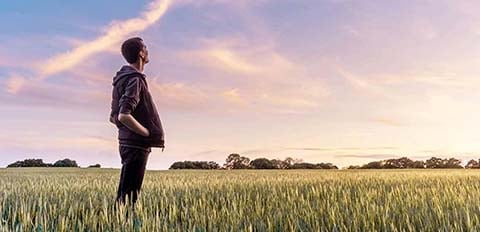
2017
Under the new CEO Mark Schneider and Chairman Paul Bulcke, Nestlé acquires Atrium Innovations. A move which supports Nestlé's development in consumer healthcare, while complementing the focus on high-growth categories like coffee, petcare, infant nutrition and plant-based products. US investments are made in Blue Bottle Coffee, Sweet Earth and Freshly.
2018

Nestlé acquires dog nutrition business Tails.com. It's also granted the rights to market Starbucks products globally, outside of the company's coffee shops. This gives Nestlé a platform for growth in North America and worldwide. In addition, the business sets out the ambition to make 100% of its packaging recyclable or reusable.
2019

Nestlé inaugurates the Nestlé Institute of Packaging Sciences, closes the sale of Nestlé Skin Health, and sells 60% of its stake in Herta to create a joint venture with Casa Tarradellas. It also sells its U.S. ice cream business to its Joint Venture Froneri. Internally, the business supports families with a new and enhanced parental leave policy.
2020

Nestlé Health Science expands its portfolio through the acquisition of Zenpep, Vital Proteins and Aimmune. While the Yinlu peanut milk and canned rice porridge businesses are sold. Nestlé also launches its Net Zero Roadmap, which outlines the company's commitment to achieve net zero emissions by 2050 at the latest.
2021

The business sells Nestlé Waters North America brands and acquires functional hydration brands Essentia and Nuun. In the same year, Nestlé reduces its stake in L'Oréal, while Nestlé Health Science boosts its portfolio through the part acquisition of The Bountiful Company. 'Generation Regeneration' is launched and Nestlé publishes its climate roadmap.
2022
Nestlé kicks off the year by announcing further plans to tackle child labor risk. Shortly followed by the creation of the Nestlé Institute of Agricultural Sciences, which aims to strengthen the business's agricultural science expertise. The company also achieves its carbon peak. Meanwhile, Nestlé Health Science acquires a majority stake in Orgain, a leader in plant-based nutrition.
